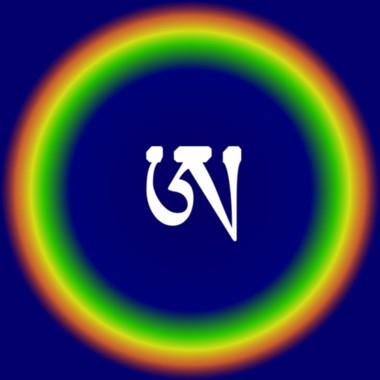Namkha Artæ (2014) (23:00) Symphonic Poem for Orchestra & Chorus. Copyright © Mihai Popean, 2007. All Rights Reserved.

ནམ་མཁའ་ཨར་གཏད།
Program Notes:
NAMKHA ARTÆ translates loosely as Meditation on the Space-Like “A”, the sound equated with primordial purity in some cultures of Tibet and India, and found in English in words such as “God” or “Love. The ideas for this work were developed at the Vajra Temple during a summer retreat at Odiyan Monastery in Cazadero, California. The ambient sounds included strings of bells attached to the temple as well as prayer flags moved by the wind and the sounds of nature. These were complimented by those of the Pacific Ocean which I was gazing at from the mountaintop through an eye opened in the low clouds formed beneath my altitude. There was a persistent fragrance of roses and magnolia flowers and a sense of wonder and unbounded vastness, which is a dominant feature of the soundscapes in this work.
Khandro is the Tibetan word homologue to the Sanskrit ḍākinī, a wisdom being in female form which can act as a bestower of knowledge, as a source of inspiration, or as a supportive agent for those looking for self-emancipation. It is said that in certain conditions, if one pays close attention, they can be perceived casting flower petals from the sky and singing songs of praise. The Khandro’i Gur (The Song of the Ḍākinīs) which adorns the final section of NAMKHA ARTÆ is inspired by language specific to Ḍākinīs’ songs of praise found in the terma (Tibetan: “Hidden Treasure”) tradition of Padmasambhava – the patriarch of Vajrayāna Tibetan Buddhism and Samyé, the first Tibetan monastery build in the 8th century (A.D.).
This work is partly inspired by my research on the ancient culture of the Tibetan plateau, in an effort to showcase elements of a millenia-long tradition which until recently was not widely known outside of its own geographical area. Furthermore, it is a homage to the sustained efforts of Tarthang Tulku (Odiyan Monastery, California) to preserve the Tibetan culture in USA ever since he arrived in 1970 and whose monumental written work as author and translator was a main source for my research.
Moments:
- The Chase
- The Capture
- Dance Macabre
- The Draw
Performances:
No performances as of today
